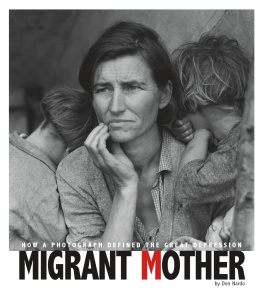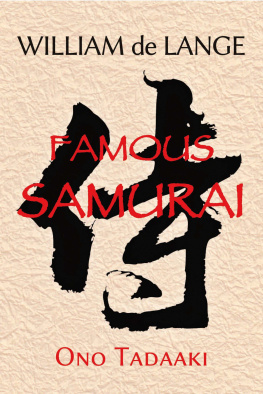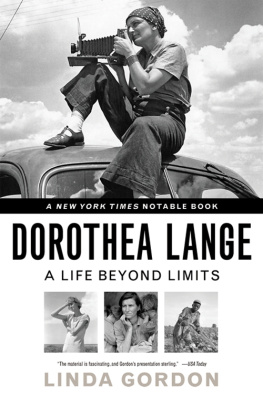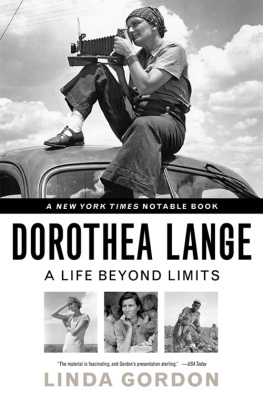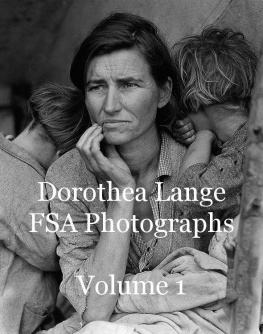The publisher gratefully acknowledges the generous support of
the Valerie Barth and Peter Booth Wiley Endowment Fund in History
of the University of California Press Foundation.
California on the Breadlines
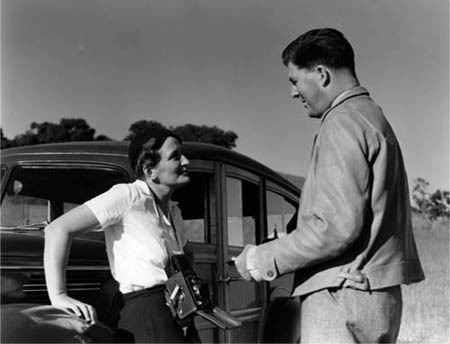
California
on the Breadlines
Dorothea Lange, Paul Taylor, and the
Making of a New Deal Narrative
Jan Goggans

Frontispiece: Dorothea and Paul Taylor, 1939. Photo by Imogen Cunningham. Imogen Cunningham Trust. www.imogencunningham.com .
University of California Press, one of the most distinguished university presses in the United States, enriches lives around the world by advancing scholarship in the humanities, social sciences, and natural sciences. Its activities are supported by the UC Press Foundation and by philanthropic contributions from individuals and institutions. For more information, visit www.ucpress.edu.
University of California Press
Berkeley and Los Angeles, California
University of California Press, Ltd.
London, England
2010 by The Regents of the University of California
Library of Congress Cataloging-in-Publication Data
Goggans, Jan.
California on the breadlines : Dorothea Lange, Paul Taylor, and the making of a New Deal narrative / Jan Goggans.
p. cm.
Includes bibliographical references and index.
ISBN 978-0-520-26621-6 (cloth : alk. paper)
1. Lange, Dorothea. 2. Women photographers United States Biography. 3. Taylor, Paul Schuster, 1895 1984. 4. Social scientists United States Biography. 5. Rural poor United States History. 6. Depressions 1929 United States. I. Title.
TR140.L3G645 2010
770.92'2 dc22
2009038130
Manufactured in the United States of America
19 18 17 16 15 14 13 12 11 10
10 9 8 7 6 5 4 3 2 1
This book is printed on Cascades Enviro 100, a 100% post consumer waste, recycled, de-inked fiber. FSC recycled certified and processed chlorine free. It is acid free, Ecologo certified, and manufactured by BioGas energy.
In memoriam:
Charles Edward Goggans
Born August 7, 1928
Arrived in California in 1932
Died June 25, 1991
ILLUSTRATIONS
ACKNOWLEDGMENTS
Like many first books, this one seems to have begun long before its debut. Perhaps unlike many, it has changed radically over time. Despite the likelihood that few who were involved in the initial stages will recognize the final outcome, all who have contributed along the way deserve thanks.
At the University of California, Davis, professors Linda Morris, David Robertson, and Jack Hicks all provided the mysterious spark that began my work on Paul Taylor and Dorothea Lange, and all three have remained, since then, enthusiastic supporters. In addition, the Davis Humanities Institute provided a working space for me while I brought the first version into existence. I was also helped by a generous award from the American Association of University Women.
That first version began its initial transformation as the result of a Kevin Starr California Studies Postdoctoral Fellowship. The award funded my research and revisions, and introduced me to the University of California Press, and while the fellowship itself no longer exists, I remain grateful to it, and to Kevin Starrs vision of California Studies.
The final version owes much to many people, particularly the dedicated and tireless staff of the Bancroft Library. I spent hours poring through box after box of Paul Taylors archives, and everyone in the library was not simply helpful and informed, but genuinely enthusiastic. None, however, was more so than David Kessler, whom I simply cannot thank enough. His dedication and his boundless energy and helpfulness are, in a word, unsurpassed. Additionally, Susan Snyder has been a pleasure to work with, swiftly and efficiently obtaining permissions to use crucial sources. I hope I have been able to do all their work justice.
Just as important have been the Oakland Museum and those who have worked with me in the archives. I extend special gratitude to curator of photography Drew Johnson and to Robin Doolin, whose hard work in Rights and Reproductions provided me with essential interviews, photographs, and sources.
The text that finds its way to print came into existence at the University of CaliforniaMerced, and I owe a deep dept of gratitude to many who are there. My current dean, Hans Bjornsson, has been unfailingly supportive of this project. While here, I have benefited from a stimulating intellectual climate created by my colleagues, many of whom have offered helpful advice and encouragement, particularly Gregg Camfield, Robin DeLugan, Kevin Fellezs, Gregg Herken, Kathleen Hull, Shawn Kantor, Sean Malloy, and Cristian Ricci. Beyond Merced, I have benefited from participation with a diverse group of colleagues involved in California Studies, particularly those with me on the steering committee of the California Studies Consortium: Roberto Alvaraz, Catherine Candee, Kerwin Kline, Mariam Lam, Catherine Mitchell, Dante Noto, Kim Robinson, Lynne Withey, Clyde Woods, and especially David Theo Goldberg and David Wellman. To all of these people, thank you.
The book benefited in more ways than I can describe from the generous contributions of various individuals whose work has shaped it, bettered it, and enriched it. Sally Stein contributed Katharine Whiteside Taylors unpublished memoir, and Paul Taylors son-in-law Donald Fanger provided permission. Paul Taylors grandson William Loesch and Dorothea Langes son Daniel Dixon generously granted interviews. Paul Taylors daughter Katharine Taylor Loesch was kind enough to respond to my questions in writing, and his granddaughter Dyanna Taylor provided crucial feedback and context. I am grateful to each of these important people. For access to photographs from the Bancroft Library, courtesy of Susan Snyder; the Oakland Museum, with the help of Robin Doolin; the Library of Congress, with Paul Hogroians assistance; and the Imogen Cunningham Trust, courtesy of the always wonderful Betsy and Meg Partridge, I am profoundly grateful.
No matter how solitary an act writing may sometimes seem, it depends on the help of others. I was fortunate to have the help of three intelligent, insightful, and energetic student researchers. To Walter Knops, who helped me more than I can describe in researching the radical movements of the 1930s; to Michael Barba, who worked with me on theories of subaltern identities; and to Kacy Marume, who worked tirelessly to produce brilliant work on womens reading habits of the 1920s and 1930s, I offer humble, profound thanks, and admiration. You are the students who pave the future for UCMerced.
Beyond this, I depended on a generous group of colleagues who were willing to read versions of my manuscript and provide valuable feedback, without which the book surely would have suffered. Kacy Marume edited the entire manuscript, and Linda Morris, Gregg Camfield, Michael Barba, and Sean Malloy all contributed immensely to chapters they read on my behalf. To Sean I extend special acknowledgment; whether he was offering a quick lesson on Populism and suggestions for sources, pragmatic help in issues of formatting and footnoting, or encouragement, empathy, and a willing ear, he remained consistently available to me, always when I needed help the most. I learned much from him, always, and can only hope the book reflects his intelligence, sensitivity, and understanding of how history works.
Next page

